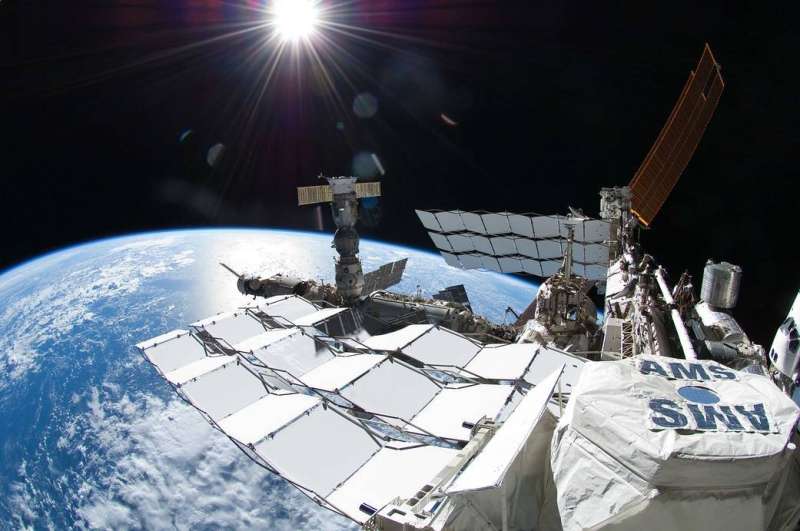June 1, 2020 report
New properties of cosmic rays, silicon, magnesium and neon found by Alpha Magnetic Spectrometer aboard ISS

A very large team of researchers from around the globe has found new properties of the cosmic rays silicon, magnesium and neon using data from the Alpha Magnetic Spectrometer aboard the International Space Station. In their paper published in the journal Physical Review Letters, the group describes their study of the three elements and what they found out about them.
The International Space Station provides physicists an opportunity to study cosmic rays with more precision than ever before. This is because the cosmic rays that strike the space station have not gone through the Earth's atmosphere. To take advantage of this opportunity, researchers affiliated with the CERN project sent a device called the Alpha Magnetic Spectrometer, also known as the AMS-02, to the ISS in 2011. AMS-02 measures antimatter in cosmic rays with unprecedented precision. Since its installation, AMS-02 has recorded data on billions of cosmic ray events. The ultimate goal of researchers studying data sent back by AMS-02 is to better understand cosmic rays and to find physical evidence of dark matter.
Prior research has shown that most of the cosmic rays that have energies above 1 GeV that reach the Earth originate from outside of our solar system—and most of them are protons and helium ions, though there are small amounts of heavier elements, as well. Most such cosmic rays are believed to have been created in stars and make their way to us when the stars explode as a supernova.
Prior research has also shown that such rays can be impacted by other particles and by magnetic fields—and they can also be reduced to smaller nuclei if they collide with other particles. Because of such interference, it is very difficult for scientists to trace individual cosmic rays back to a given source. But cosmic rays do carry some evidence of their history and thus by extension, evidence of supernova explosions, and other structures in the galaxy—and the interstellar medium.
Thus, in studying them with ever greater precision, physicists hope to learn more about how they were created and the nature of the objects and forces that impacted them as they made their journey here. Thus far, the research team has found subtle, previously unknown differences between the spectra of the light and heavy ions, something that will be up to theorists to explain.
More information: M. Aguilar et al. Properties of Neon, Magnesium, and Silicon Primary Cosmic Rays Results from the Alpha Magnetic Spectrometer, Physical Review Letters (2020). DOI: 10.1103/PhysRevLett.124.211102
Journal information: Physical Review Letters
© 2020 Science X Network





















